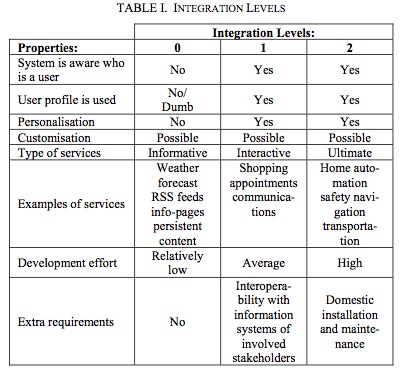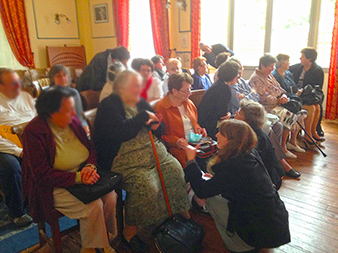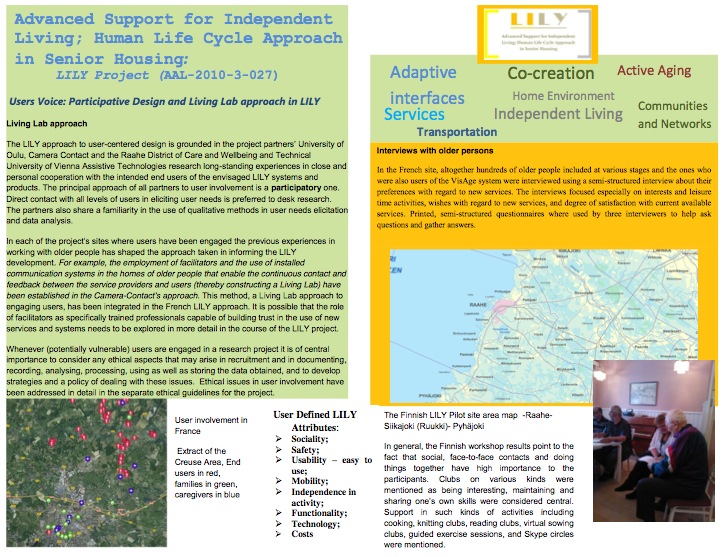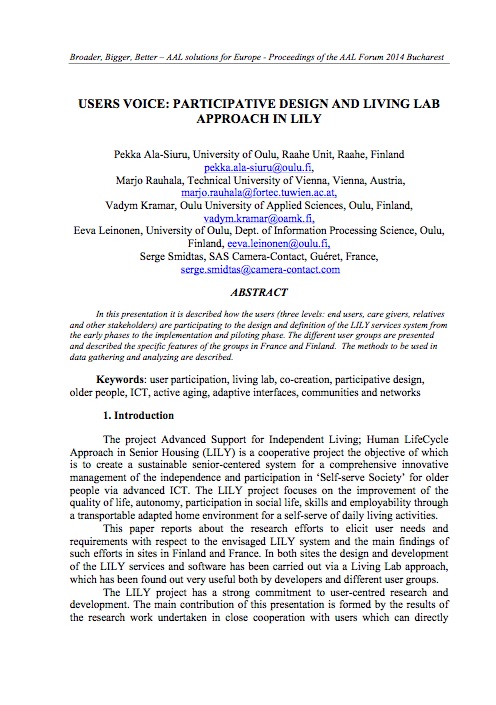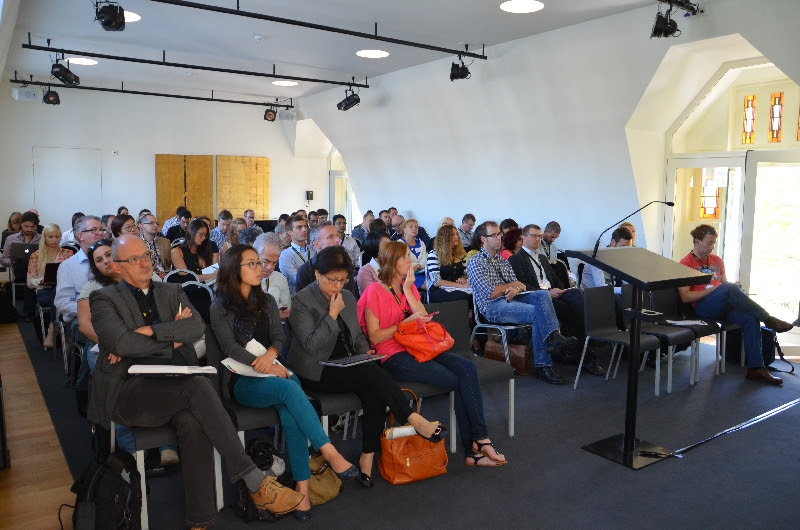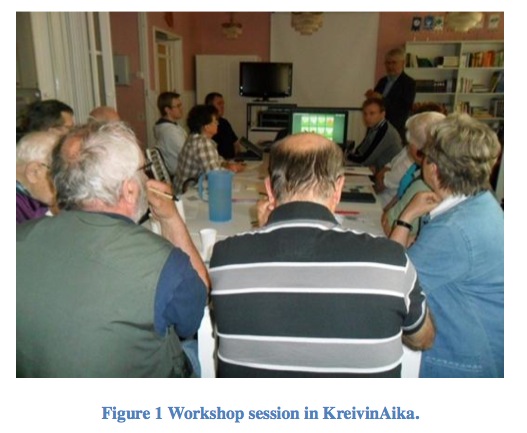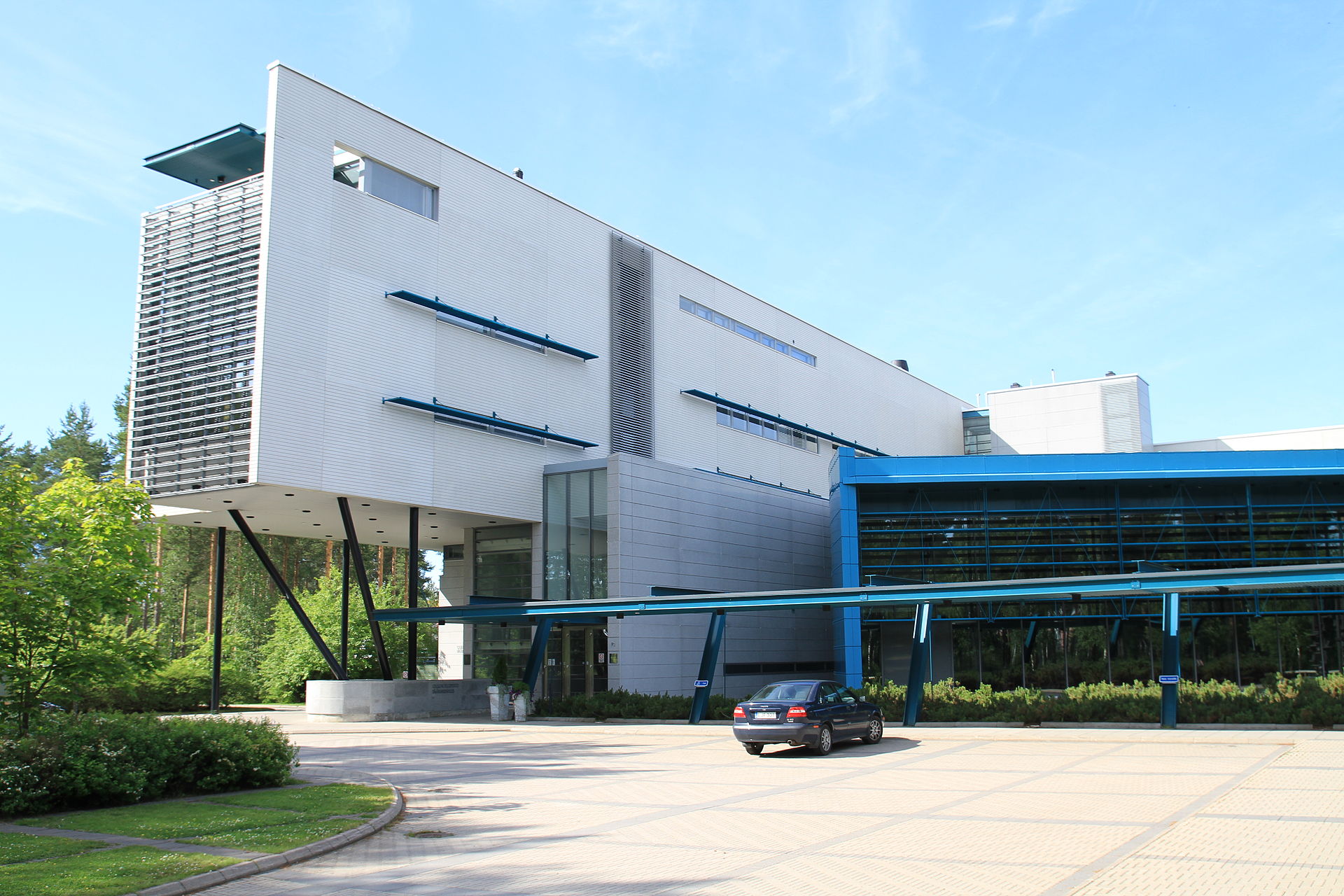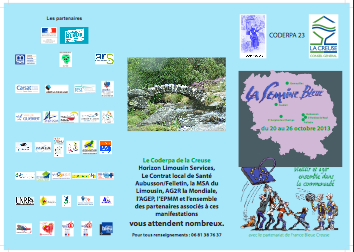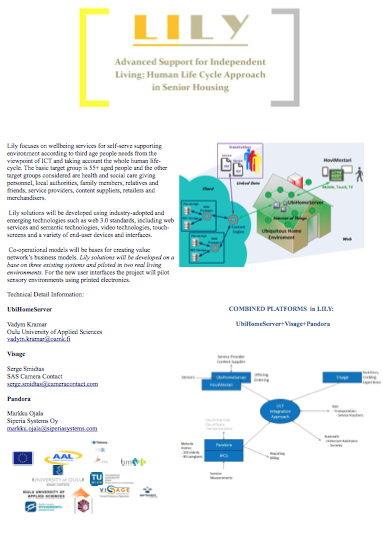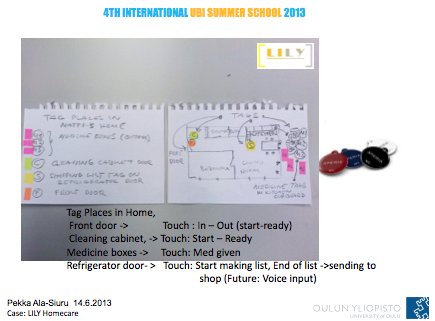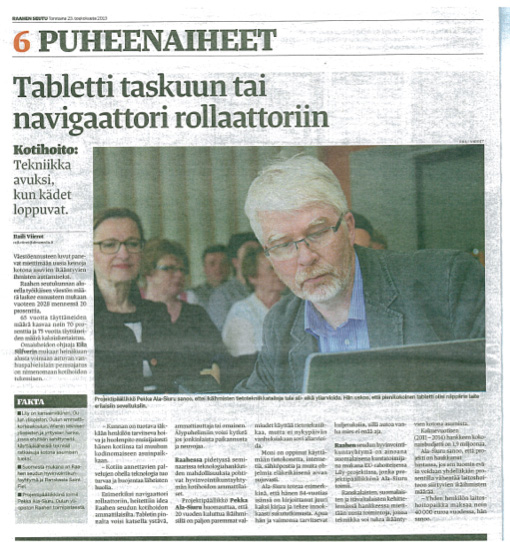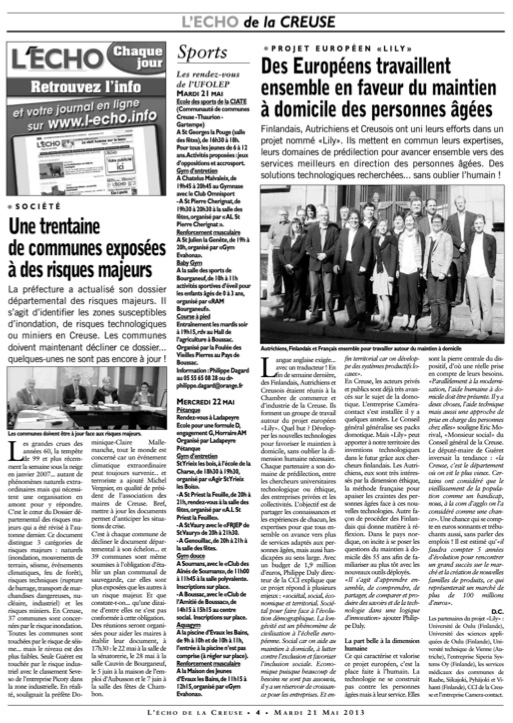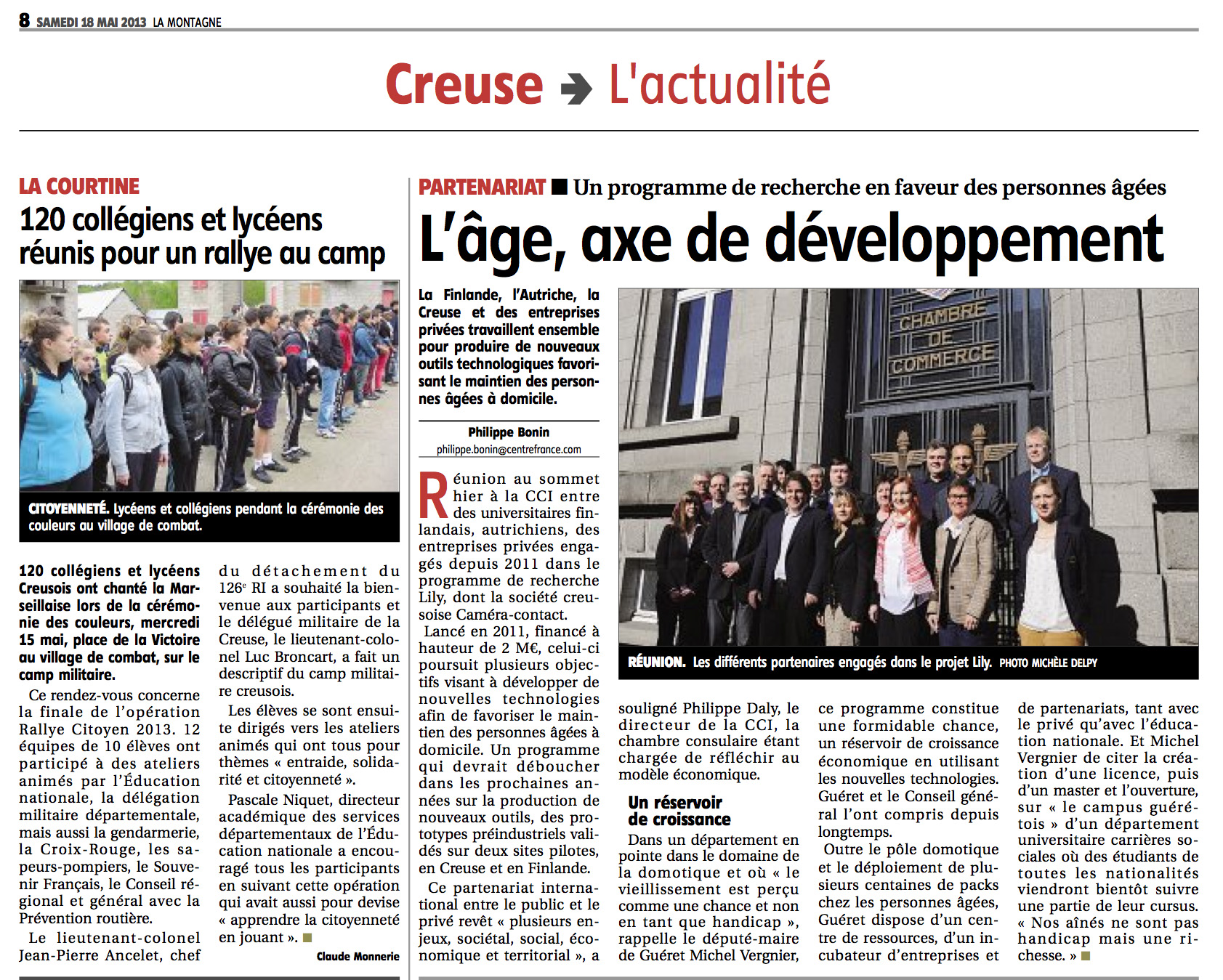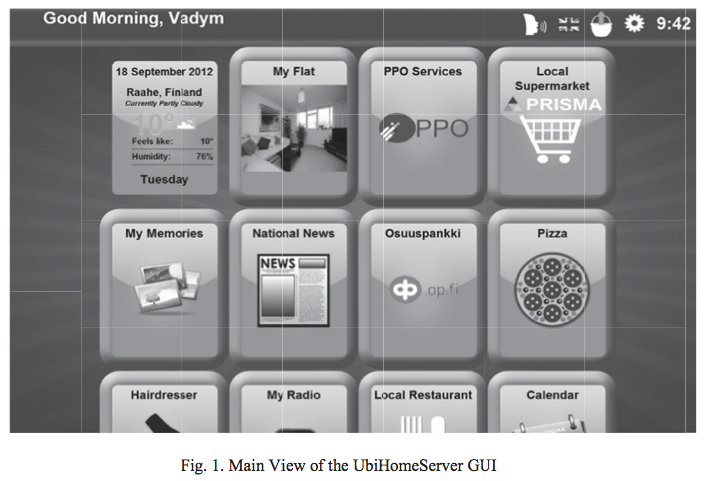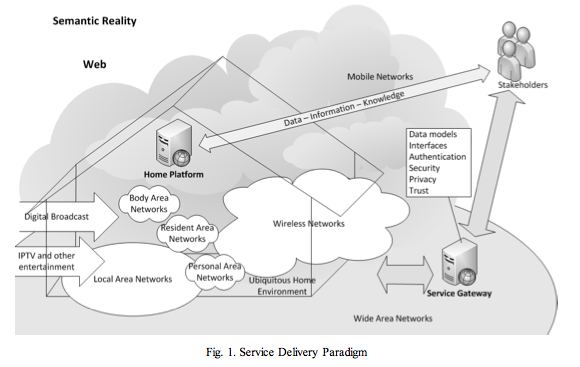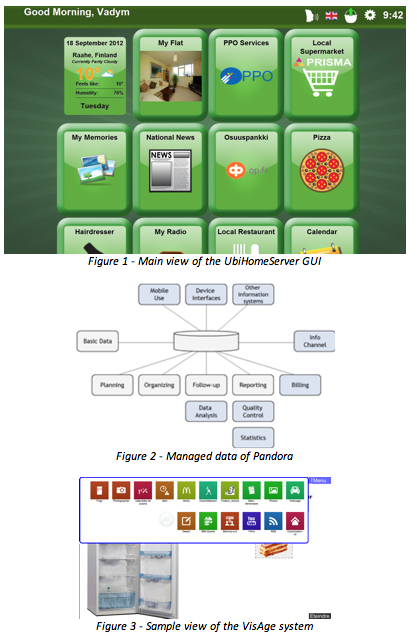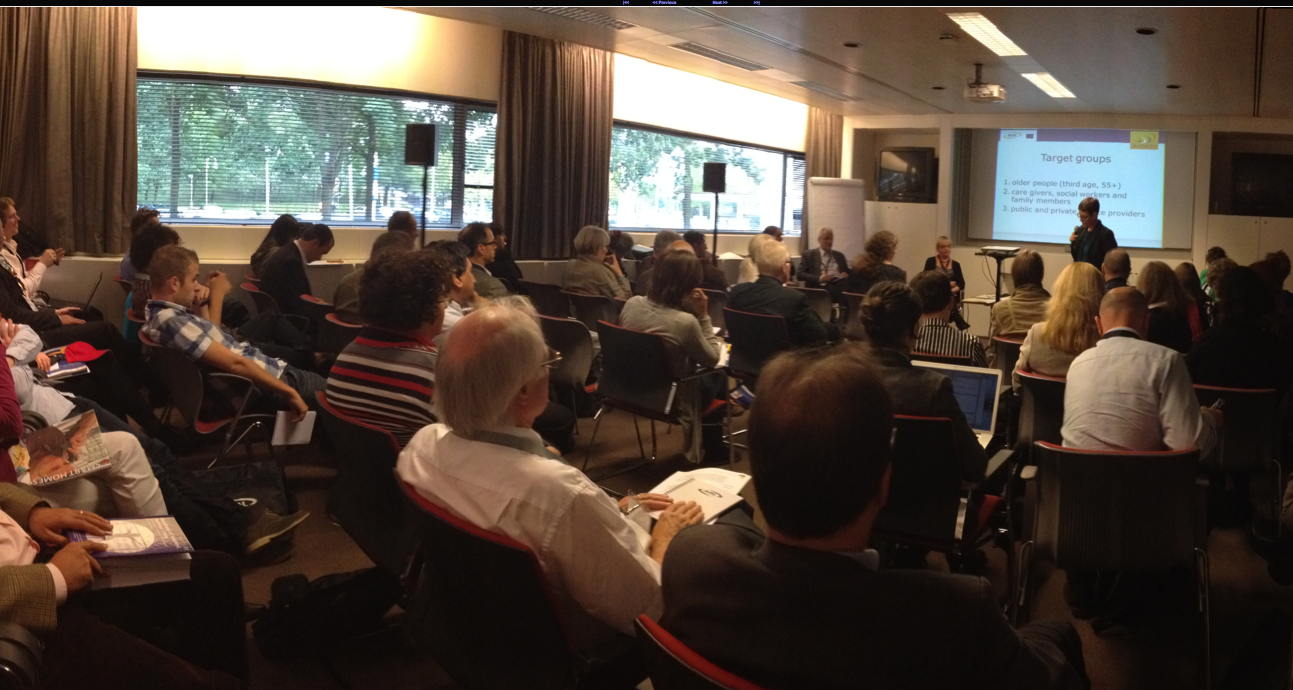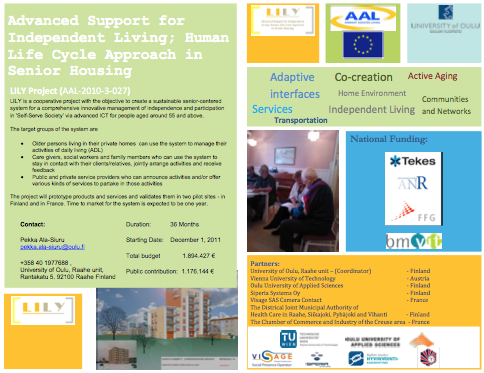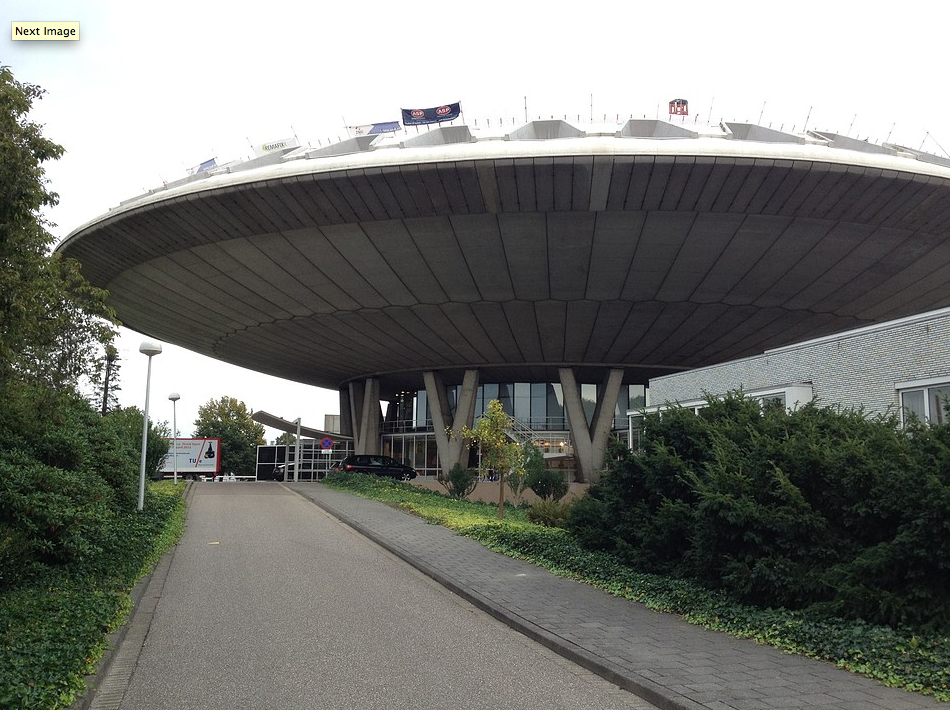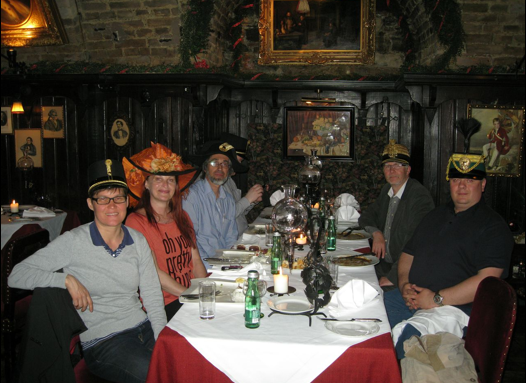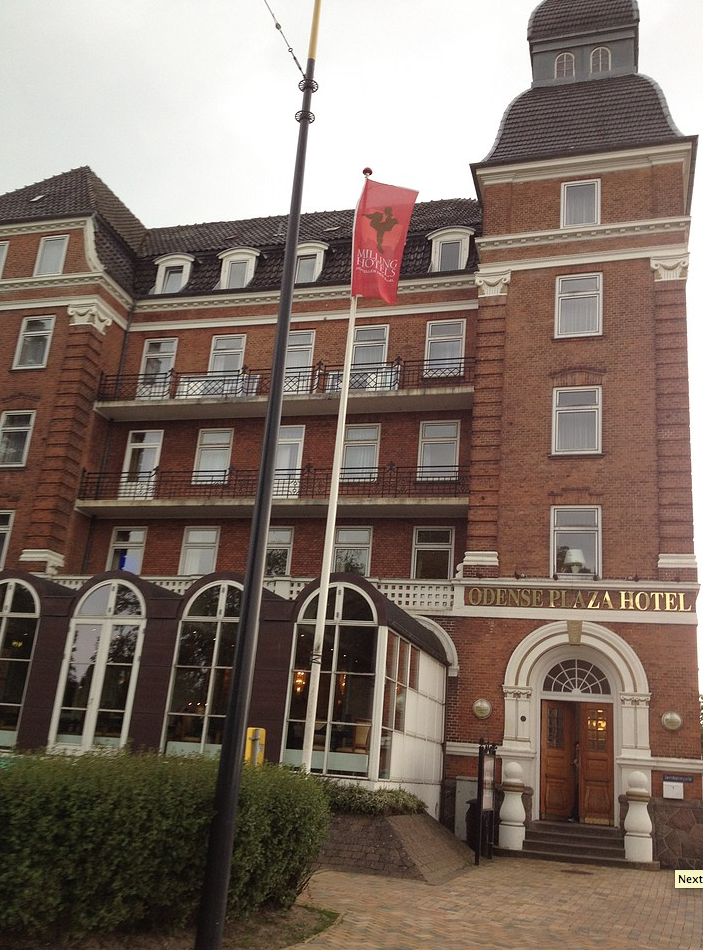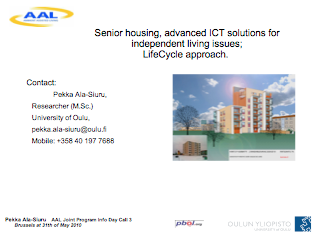Field trials in numbers
Exhibition in Helsinki 2th December 2014 at the Vanha Ylioppilastalo.
END-USER EXPERIENCES AND PERSPECTIVES – HOVIMESTARI
Vadym Kramar1, Markku Korhonen1, Marjo Rauhala2
1Oulu University of Applied Sciences, Oulu, Finland
2Vienna University of Technology, Vienna, Austria
MobileMed 2014 conference that will take a place 20-21.11.14 in Prague
Abstract
This paper is about results of the first stage of a field trial that aims to evaluate end-user practices with HoviMestari, one of the systems that intends to support independent living of disabled and elderly people. The field trial has been launched in the Raahe District of Northern Ostrobothnia, Finland, in the beginning of 2014 and continues. 16 services were selected by a group of 20 test users for a field trial and tested. Average age of test users is above 65 and the group consists of retired and pre-retired people, where 5 of them are formal care-givers. In the paper a description of gathered end-user attitudes towards services provisioned with the help of the HoviMestari system as well as discovered during the field trial future perspectives of a multi-service environment are presented.
Decentralised Approach to Provision of Home Services FRUCT 2014
15th FRUCT Conference 27-31 October 2014
Decentralised Approach to Provision of Home Services FRUCT 2014
Finnish-Russian University Cooperation in Telecommunications
Vadym Kramar, Markku Korhonen
Oulu University of Applied Sciences Oulu, Finland
Serge Smidtas
VisAge CameraContact Guéret, France
Marjo Rauhala
Vienna University of Technology Vienna, Austria
Abstract—This paper introduces another approach that addresses interoperability in AAL domain, the Decentralised Service Delivery Architecture. The approach was developed Within the Advanced Support for Independent Living; Hu- man Lifecycle Approach in Senior Housing (Lily) project, funded by the Ambient Assisted Living Joint Programme. The approach has a decentralised architecture and therefore dif- fers from traditional approaches where services are provi- sioned services via central nodes, such as service portals or hubs, dedicated home platforms or systems. The idea of the architecture is to use linked descriptions of samples of service- product continuum that can be discovered using certain crite- ria, and thus provisioned to inhabitants of intelligent envi- ronments. The paper presents certain particularities of the architecture and highlights important associated aspects, such as ethics and trust.
Exhibition and conference at Grand Hotel Thermal d’Evaux les Bains, France
SMART LIVING AND AAL SERVICES – Proceedings of the AAL Forum 2014 Bucharest
Vadym Kramar[1], Markku Korhonen[2], Serge Smidtas[3], Marjo rauhala[4]
Broader, Bigger, Better – AAL solutions for Europe – Proceedings of the AAL Forum 2014 Bucharest
[1] Project Officer R&D, Oulu University of Applied Sciences, Oulu, Finland
[2] Research Director, Oulu University of Applied Sciences, Oulu, Finland
[3] Director, VisAge CameraContact, Guéret, France[4] Senior Researcher, Vienna University of Technology, Vienna, Austria
The paper describes the Smart Living concept as well as the Decentralised Service Delivery Architecture, presents some particularities of the architecture and systems that utilise it – HoviMestari and VisAge. It also describes integration levels and service templates with respect to the architecture. The presented approach addresses interoperability in the AAL domain. The approach was developed within the Advanced Support for Independent Living; Human Lifecycle Approach in Senior Housing (Lily) project, funded in the Ambient Assisted Living Joint Programme. The decentralised approach differs from traditional approaches where services are provisioned via central nodes as via service portals or hubs, dedicated home platforms or systems. The idea of the architecture is to use linked descriptions of samples of service-product continuum that can be discovered using certain criteria, and thus provisioned through the AAL systems.
AAL Forum 2014 Posters
USERS VOICE: PARTICIPATIVE DESIGN AND LIVING LAB APPROACH IN LILY
USERS VOICE: PARTICIPATIVE DESIGN AND LIVING LAB APPROACH IN LILY
Pekka Ala-Siuru, University of Oulu, Raahe Unit, Raahe, Finland
Marjo Rauhala, Technical University of Vienna, Vienna, Austria
Vadym Kramar, Oulu University of Applied Sciences, Oulu, Finland
Eeva Leinonen, University of Oulu, Dept. of Information Processing Science, Oulu, Finland,
Serge Smidtas, SAS Camera-Contact, Guéret, France,
ABSTRACT
In this presentation it is described how the users (three levels: end users, care givers, relatives and other stakeholders) are participating to the design and definition of the LILY services system from the early phases to the implementation and piloting phase. The different user groups are presented and described the specific features of the groups in France and Finland. The methods to be used in data gathering and analyzing are described.
Session at Open Livinglab Days 2014 Amsterdam Summer School
Participative Design and Living Lab approach in LILY – Enoll Summer School 14
Participative Design and Living Lab approach in LILY
Enoll Summer School 14 2-5/9
Pekka Ala-Siuru, University of Oulu, Raahe Unit, Raahe, Finland
Marjo Rauhala, Technical University of Vienna, Vienna, Austria
Vadym Kramar, Oulu University of Applied Sciences, Oulu, Finland
Eeva Leinonen, University of Oulu, Dept. of Information Processing Science, Oulu, Finland
Serge Smidtas, SAS Camera-Contact, Guéret, France
Consortium Meeting 10-11th June 2014, University of Oulu, Dept of Information processing Sciences
French Exhibition: La semaine bleue de VisAge du 20 au 26 octobre
- Chrambre de Commerce de la Creuse – Stand Exposition conférence avec Horizon Limousin Services, Le Contrat local de Santé, Aubusson/Felletin, la MSA du Limousin, AG2R la Mondiale, l’AGEP, l’EPMM et le Coderpa, à Genouillac, Guéret, Aubusson, St Pardoux le Neuf, Felletin, St Sulpice les Champs, avec le soutien du Conseil Général de la Creuse et France Bleur Creuse.
24-26 September, 2013 – AAL Forum
AAL Forum 2013
Louis De Geer Konsert & Kongress
Norrköping, Sweden
http://www.aalforum.eu/exhibition/exhibitors
Lily Mid-term review
With experts including AAL CMU Director: Dr. Karina Marcus, AAL CMU Project Officer: Jerome de Barros, French NCP: Martine Batoux, Austrian NCP: Gerda Geyer.
Analysis of current solutions for AAL, older care and disease management, Business models definitions
Confidentiality: restricted
Innovative ICT & Ageing-well solutions for older care and disease management have great potential for improving quality of life and sustainability of care for the ageing population. There are important initiatives on going at national, regional and local levels, but they are largely operating in isolation.
The primaryaimof the study was to identify existingsolutions for older care and disease management in Europe. The second objective is to examine and define business models related to ICT and Ageing well. But designing business models is a complex undertaking because different requirements (e.g. technical, user, organizational and financial requirements) need to be accommodated and balanced. Design choices in one domain (e.g. technical domain) may affect those of the other domains (e.g. user domain). This interrelatedness of design choices complicates the design of viable business models.
The business model describes how the entity will create value. It can involve the business’ purpose, offerings, strategies, infrastructure, organizational structures, trading practices, and operational processes and policies. So, too, appropriate technology can vary by business model, experts say. Technology can determine the business model as well.
4th international Ubi Summer school 2013:
Public tender: tablets
Tabletti taskuun tai navigaattori rollaattoriin
L’echo de la Creuse, May 2013
La montagne, May 2013
Lily meeting in Creuse, France
State of the art report and proposed architectures for AAL solutions, Standards evaluation reports
Confidentiality: Public
The project LILY – Advanced Support for Independent Living; Human LifeCycle Approach in Senior Housing is a cooperative project with the objective to create a sustainable senior-centered system for a comprehensive innovative management of independence and participation in ‘Self-Serve Society’ via advanced ICT for people aged around 55 and above.
LILY focuses on the improvement of the quality of life, autonomy, and participation in social life through an adaptable home environment for managing activities of daily living (ADL). The target groups of the system are
- Older persons living in their private home who can use the system to manage their ADL
- Care givers, social workers and family members who can use the system to stay in contact with their clients/relatives, jointly arrange activities and receive feedback
- Public and private service providers who can announce activities and/or offer various kinds of services to partake in those activities
This deliverable at hand tries to give a brief overview on the state-of-the-art, architectures and standards for AAL solutions.
Ethical and Legal State of the Art and User Involvement
Confidentiality: Public
In a project such as LILY whose success depends on adequate and effective user involvement in order to achieve its goals, there is a variety of ethical issues that need to be taken into account. Whenever users are engaged in a research project, it is of pivotal importance to consider any ethical aspects with regard to recruitment and participation as well as documenting, recording, analyzing, processing, accessing and storing the data collected. To conduct ethically sound research means to show respect for one’s research subjects, for their dignity and autonomy, for their self- determination and therefore for their own decisions and standpoints. It also means to do no harm, to minimize the risks and maximize and share the benefits, and to ensure the research subjects’ safety and privacy. How these rather general terms can be and already have been translated in practice will be the topic this report.
This deliverable is organized in the following way: Chapter 2 forms a short introduction to the LILY project and the relevance of ethics in the project. In chapter 3 general ethical principles in research will be presented. In chapter 4 an overview of ethical issues emerging in various stages of a project and strategies to deal with these issues will be given. Chapter 5 contains short examples of case studies and project reports with a focus on the ethical guidelines which were developed by the authors. Chapter 6 presents questions to be posed in all stages of a user study in a checklist format and provides one sample confirmation document for informed consent that can be modified by partners for their use. The report concludes with a collection of policies and legal frameworks applicable in the countries where LILY research takes place.
User Requirements, use Cases and Scenarios, Functional Specifications, and Final Specifications and User-Centric Model
Confidentiality: Restricted
Nutrition workshop in France
Data Models for Home Services
Vadym Kramar, Markku Korhonen, Yury Sergeev
Oulu University of Applied Sciences, School of Engineering Raahe, Finland
{vadym.kramar, markku.korhonen, yury.sergeev}@oamk.fi
PROCEEDING OF THE 13TH CONFERENCE OF FRUCT ASSOCIATION
An ultimate penetration of communication technologies allowing web access has enriched a conception of smart homes with new paradigms of home services. Modern home services range far beyond such notions as Home Automation or Use of Internet. The services expose their ubiquitous nature by being integrated into smart environments, and provisioned through a variety of end-user devices. Computational intelligence require a use of knowledge technologies, and within a given domain, such requirement as a compliance with modern web architecture is essential. This is where Semantic Web technologies excel. A given work presents an overview of important terms, vocabularies, and data models that may be utilised in data and knowledge engineering with respect to home services.
UbiHomeServer Front-end to the Ubiquitous Home Environment
Vadym Kramar, Markku Korhonen, Yury Sergeev
Oulu University of Applied Sciences, School of Engineering, Pehr Brahe Center for Industrial and Services ICT (PBOL) Raahe, Finland
{vadym.kramar, markku.korhonen, yury.sergeev}@oamk.fi
PROCEEDING OF THE 12TH CONFERENCE OF FRUCT ASSOCIATION
5-9 November 2012
To assist independent living of senior citizens at their homes, a large variety of systems are used. The most sophisticated solutions are built using ambient technologies. A number of technology platforms are designed to provide ubiquitous services for maintaining a high quality of life while reducing operational expenses. Interoperability between platforms at different levels, including GUIs’ dependences on devices is still a major weakness of many modern solutio ns. In a given work a vision of the Ubiquitous Home Environment is presented with respect to the ICT Home Services delivery. An implementation of a serving engine developed at Oulu University of Applied Sciences – the UbiHomeServer – is described. An abstracted view to its front-end is introduced. Such abstraction may reduce GUIs’ dependences on devices and thus increase an interoperability of a system.
Index Terms: Elderly, Senior Citizen, User Interface, Mobile, Smart Phone, Tablet PC, Touch Screen, Service, Ubiquitous, Home Environment.
Architectural Challenges in Constructing an AAL system; LILY Approach
- Serge Smidtas –VisAge Camera-Contact
- Vadym Kramar – Oulu University of Applied Sciences
- Markku Ojala – Siperia Systems Ltd
Proceedings of AAL Forum 2012, Eindhoven
Tomorrow in sight: from design to delivery. Proceedings of the 4th AAL Forum 2012 Eindhoven. Eindhoven: Smart Homes, ISBN 978-90-819709-1-4.
Towards a broader conceptualization of exit strategies in AAL projects
Towards a broader conceptualization of exit strategies in AAL projects
M. Rauhala, S. Oechsner, P. Ala-Siuru, M. Peyrot, E. Leinonen,
Proceedings of the AAL Forum 2012, Eindhoven
Corresponding authors: Marjo Rauhala (marjo.rauhala@fortec.tuwien.ac.at), Susanne Oechsner (Oechsner@fortec.tuwien.ac.at)
In this presentation we will introduce and discuss the meaning of the exit strategy of avoiding harm to the participants in the AAL context. Our reflection is based on a longstanding experience in ethics management of technology development projects which rely on close cooperation with future users. Whereas it is widely known that no participant in a technology research and development project should be subject to any risk of physical harm (at least beyond risk of minimal harm) we suggest that there may be a need to focus on a wider notion of harm, including those of social, financial, and psychological harm as part of a sustainable exit strategy.


